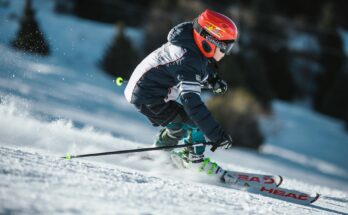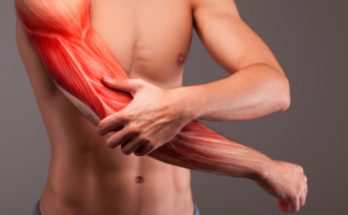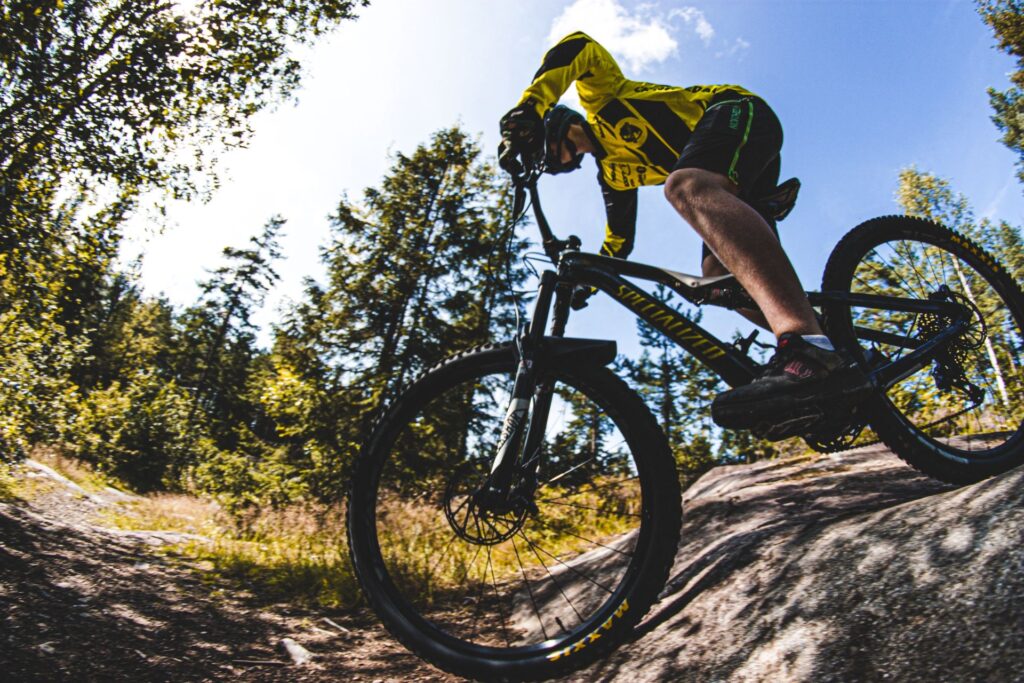
Just about every activity we do can create issues. Movement patterns develop over time and damage from these activities is cumulative. It might take years of abuse before this damage manifests into symptoms. At the heart of these problems are muscle imbalances. By supplementing our activity with the proper corrective exercise and resistance training, we can slow down and even reverse damage caused by repetitive stress. Biking injuries are common and can be mitigated with a proper strategy.
Let’s take a look at some exercises to help us start correcting and preventing problems from biking!
Foot and ankle:

The foot and ankle take a lot of abuse from cycling. Muscle imbalances develop when we overtrain certain muscles. We need to make sure the foot and ankle complex is balanced to have the best chance to avoid dysfunction over time.
Stability exercises are great for a well-rounded muscle system. Stability exercises are great as a warm-up, a cool-down, and can be performed and practiced regularly.
Balance reaches are a great way to target the small stabilizer muscles of your ankle and foot. This exercise can be progressed by standing on a foam pad or a Bosu ball!
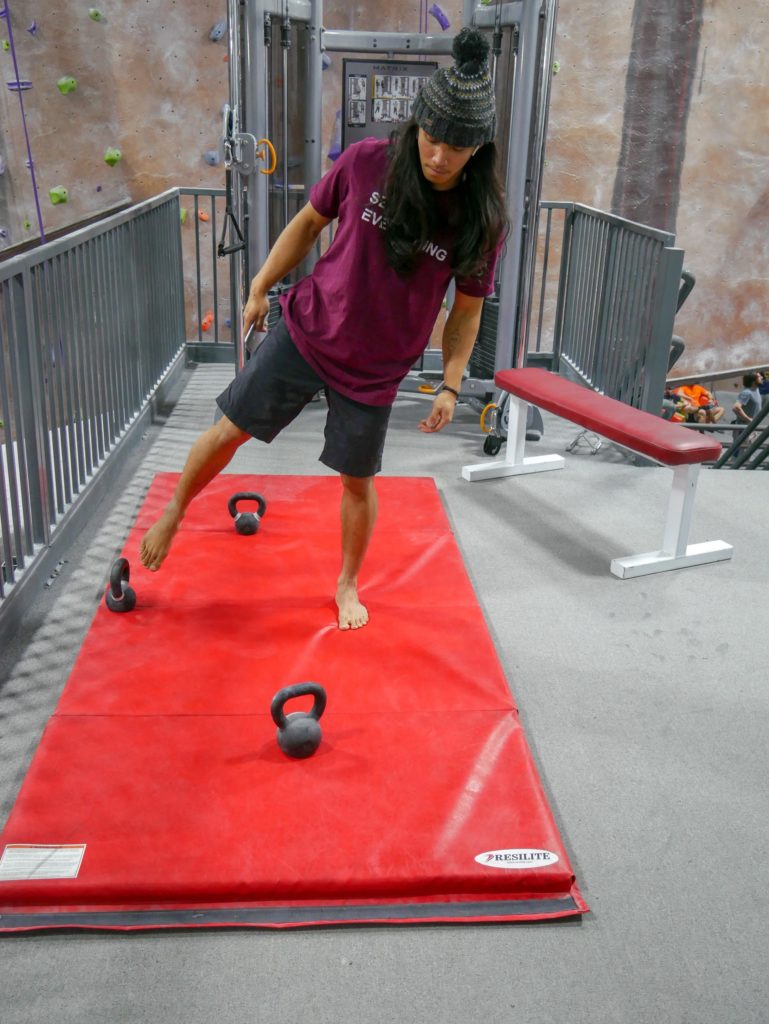
2 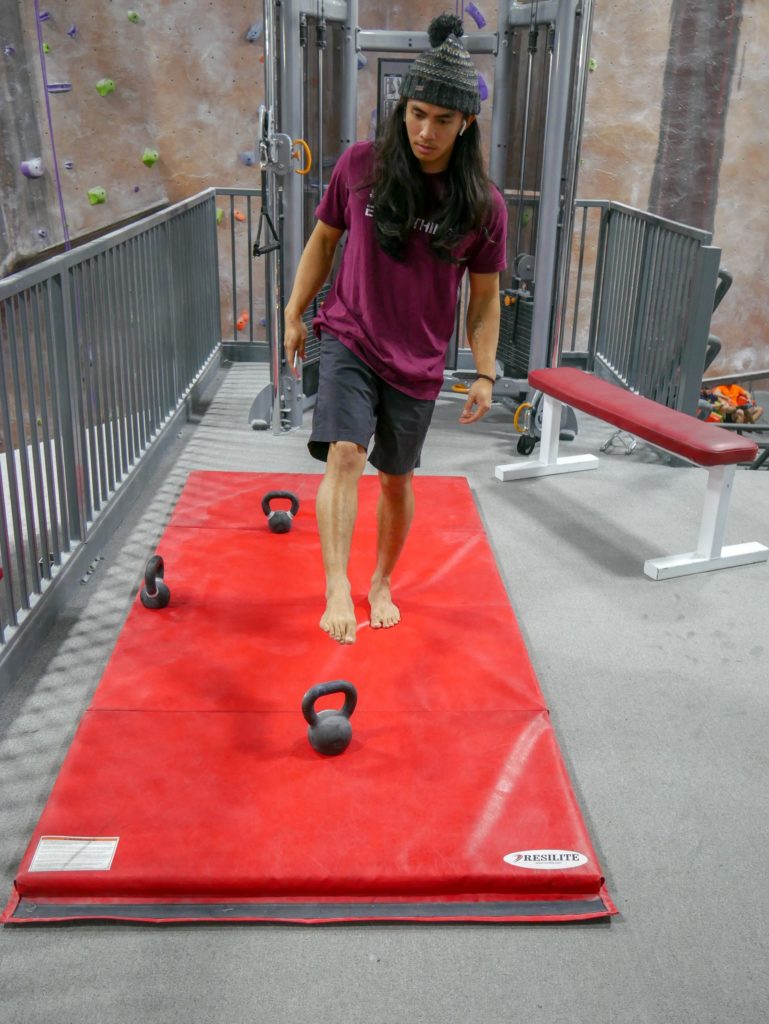
1 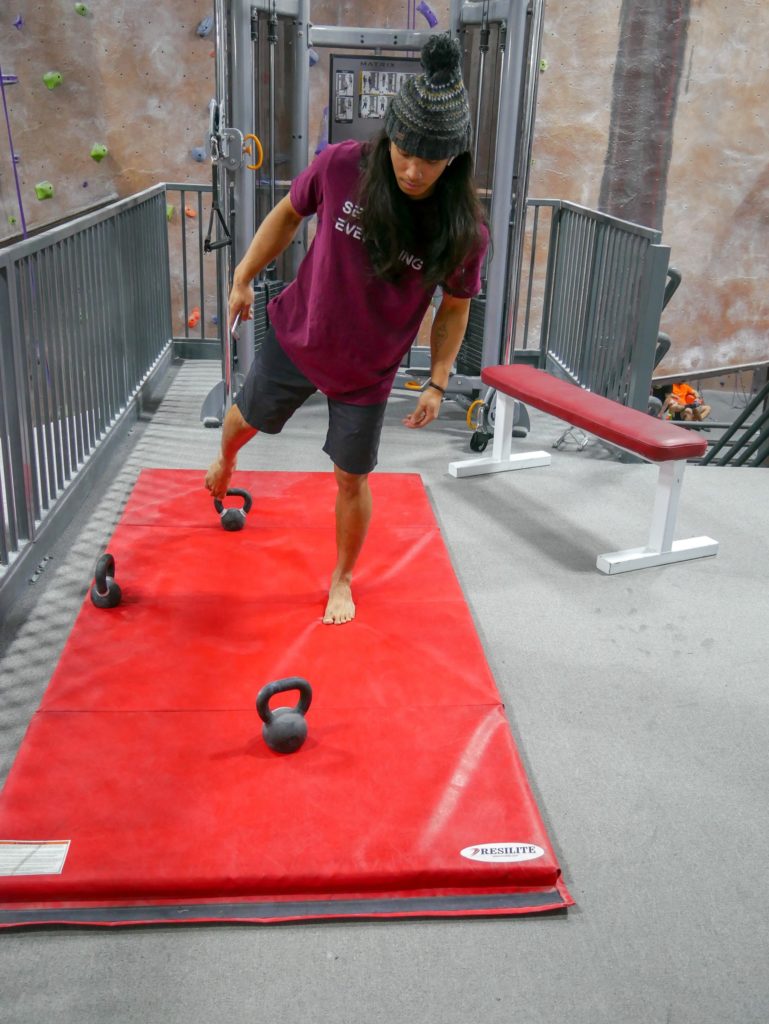
3
It’s important that we target muscles that might now be properly strengthened and developed from cycling. One important muscle to target is the tibialis muscle. This muscle can be targeted through several exercises including:
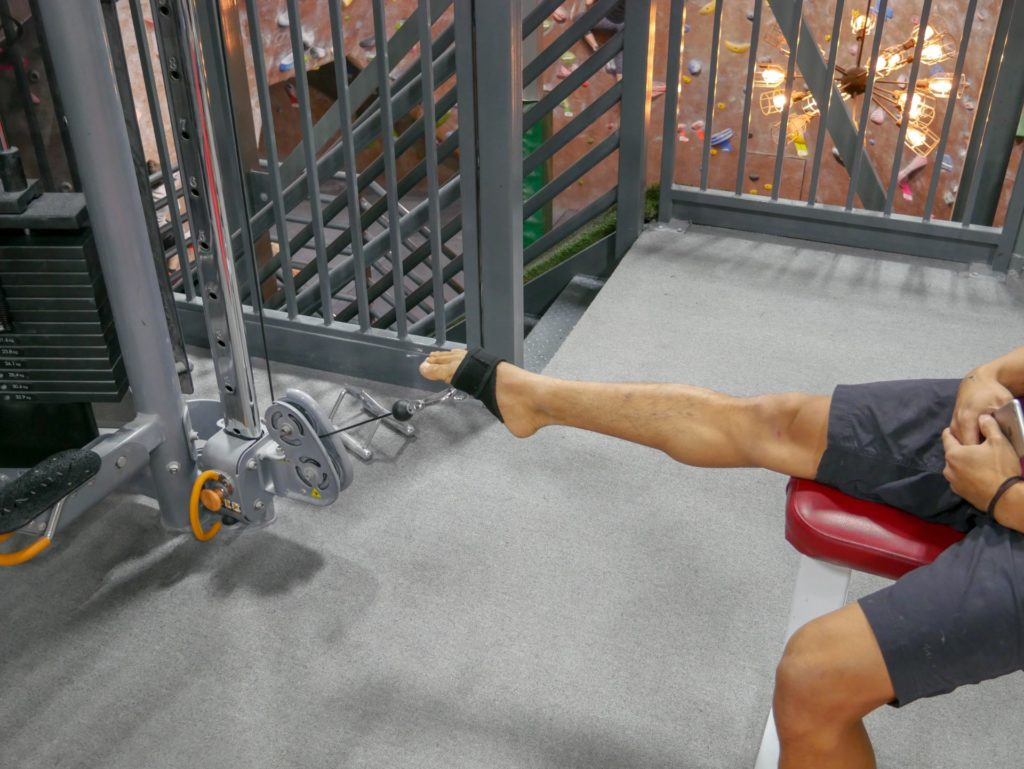
Start 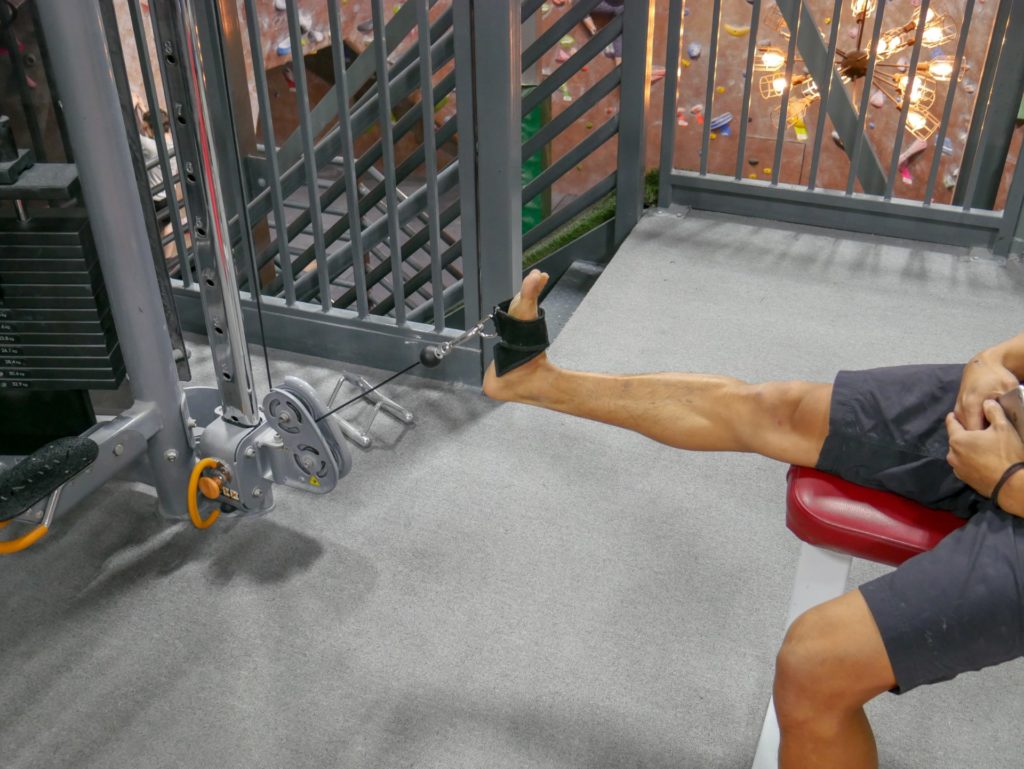
End
Knees
It’s no secret that our knees take abuse when we are cycling. From side to side movements during sprinting and climbing out of the saddle, there are many different conditions in biking that can damage our knees.
Targeting the different functions of the hamstring is important for maintaining healthy knee function. By performing an exercise such as a hamstring curl from different angles, we can target all the different muscles of the hamstring complex:
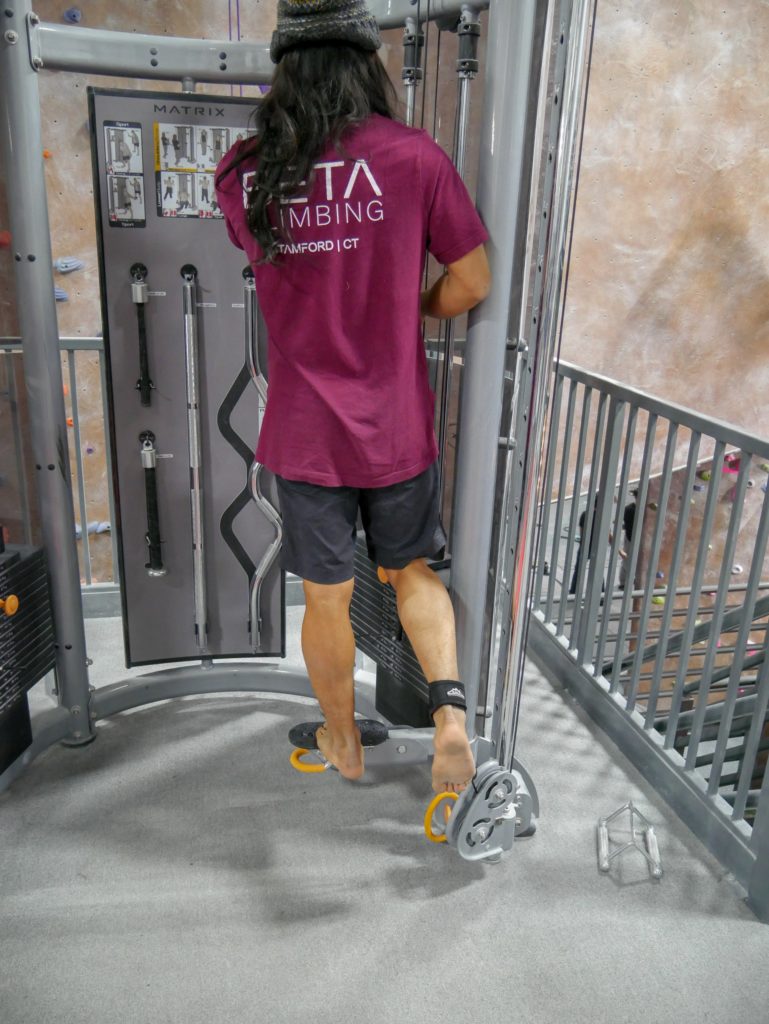
Start 
End – Outside 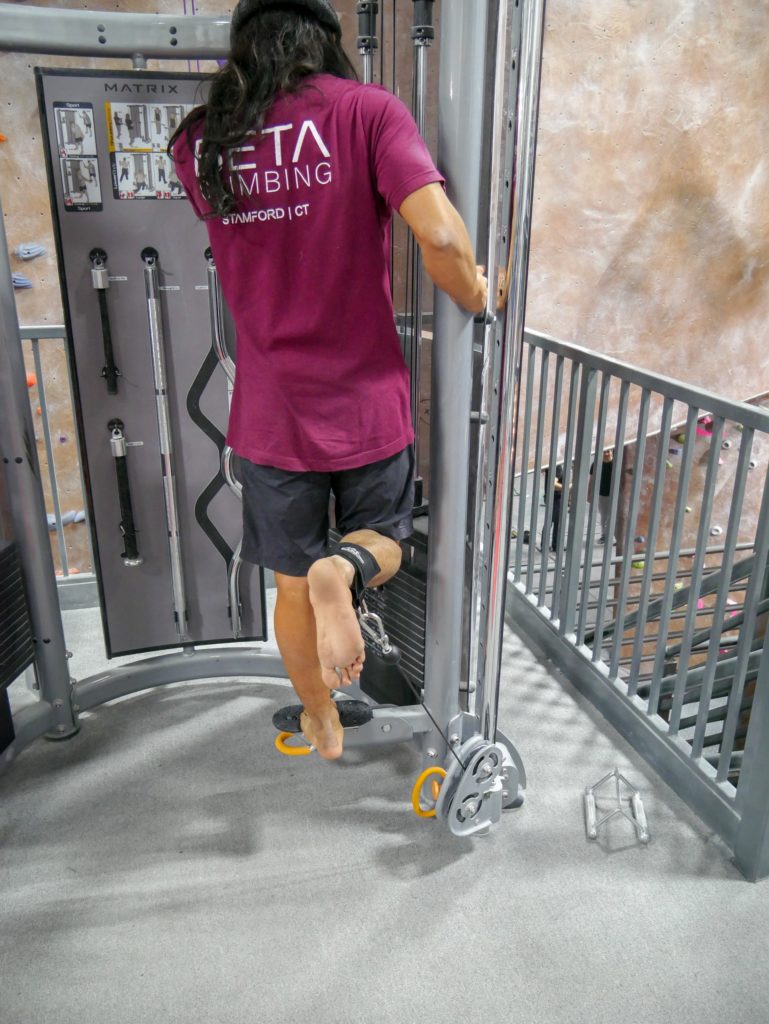
End – Inside
Other exercises to improve knee function should help to improve lateral stability, and knee extension as well. A good example is the side lunge:
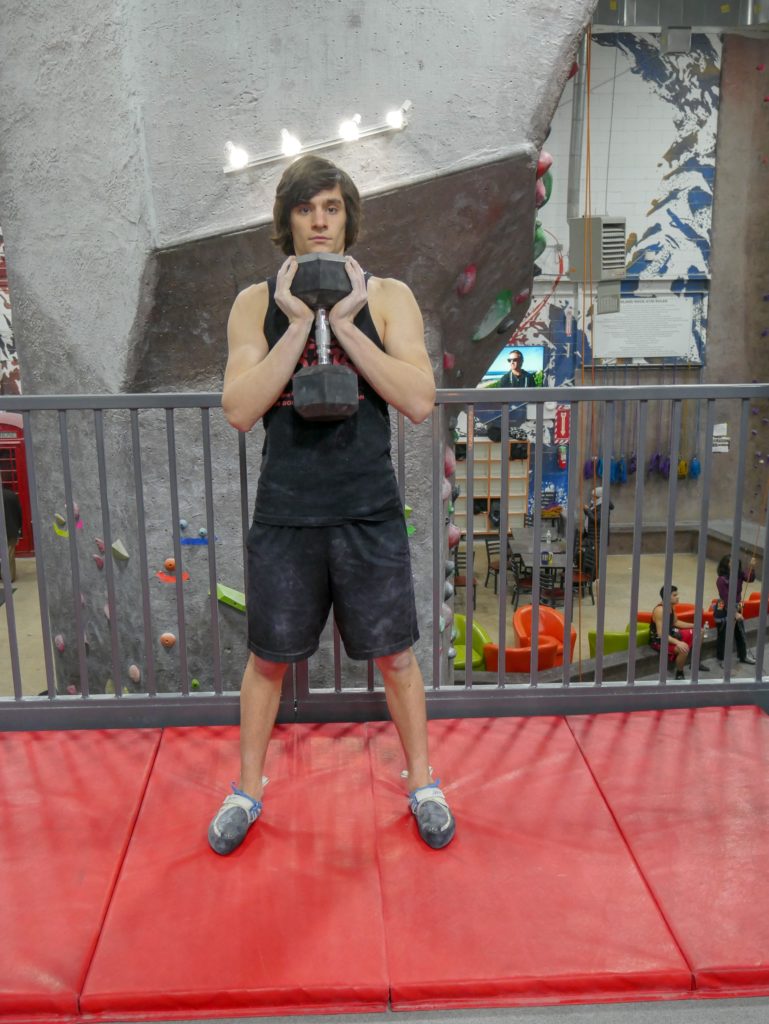
1 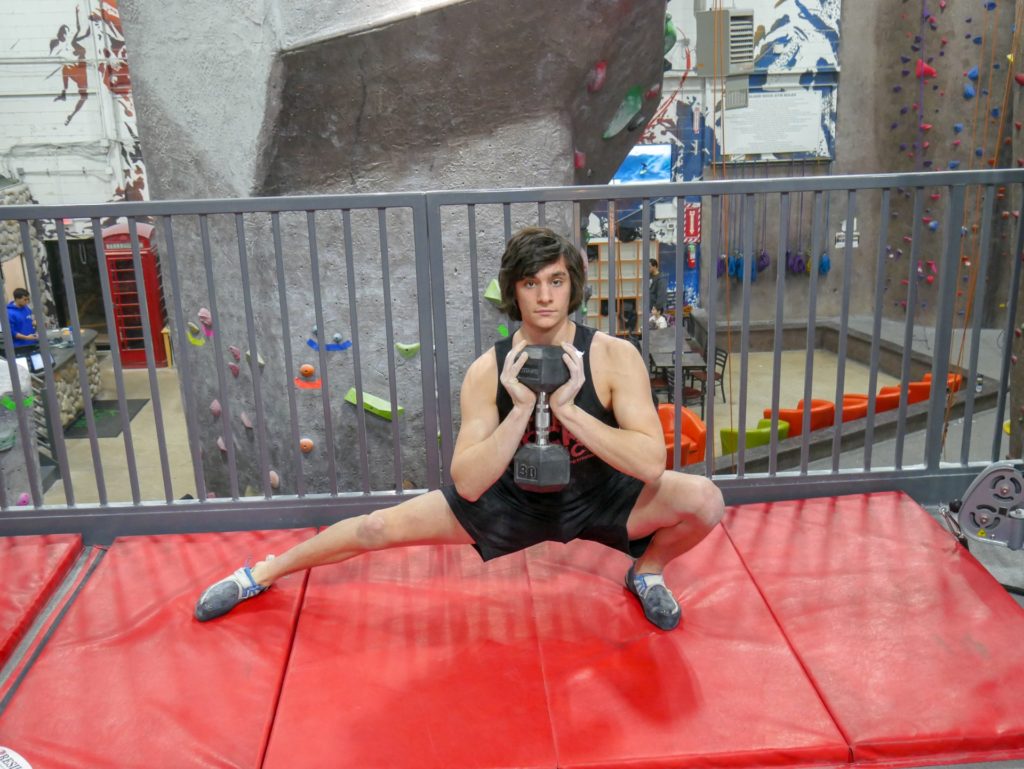
2 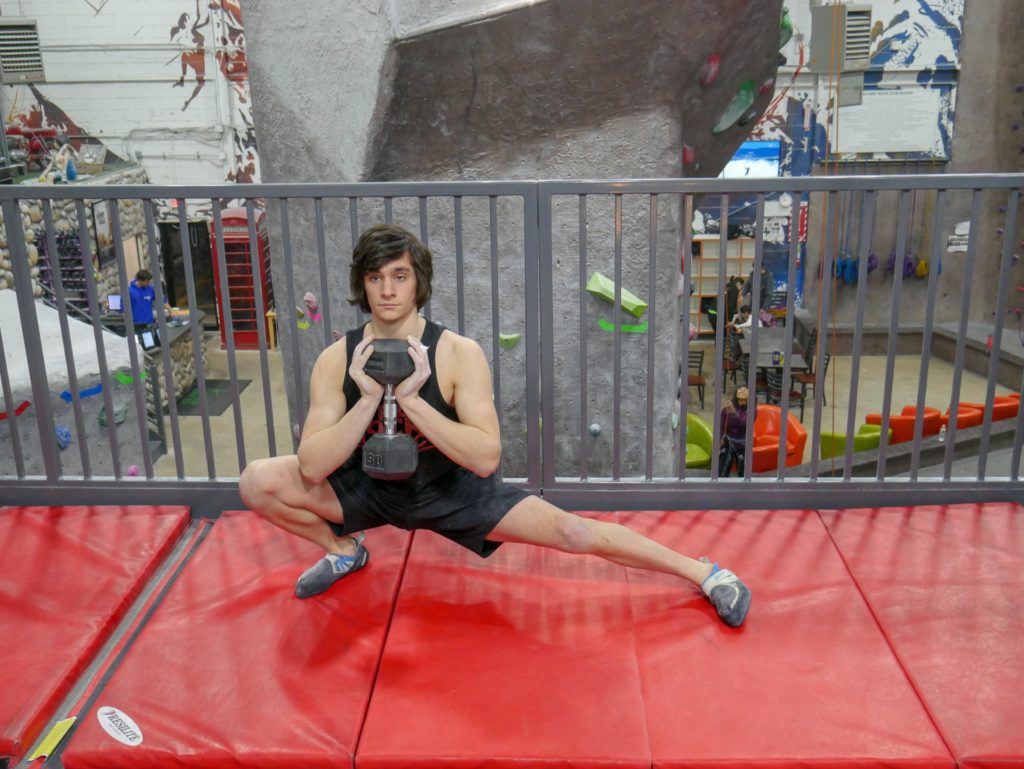
3
Hips
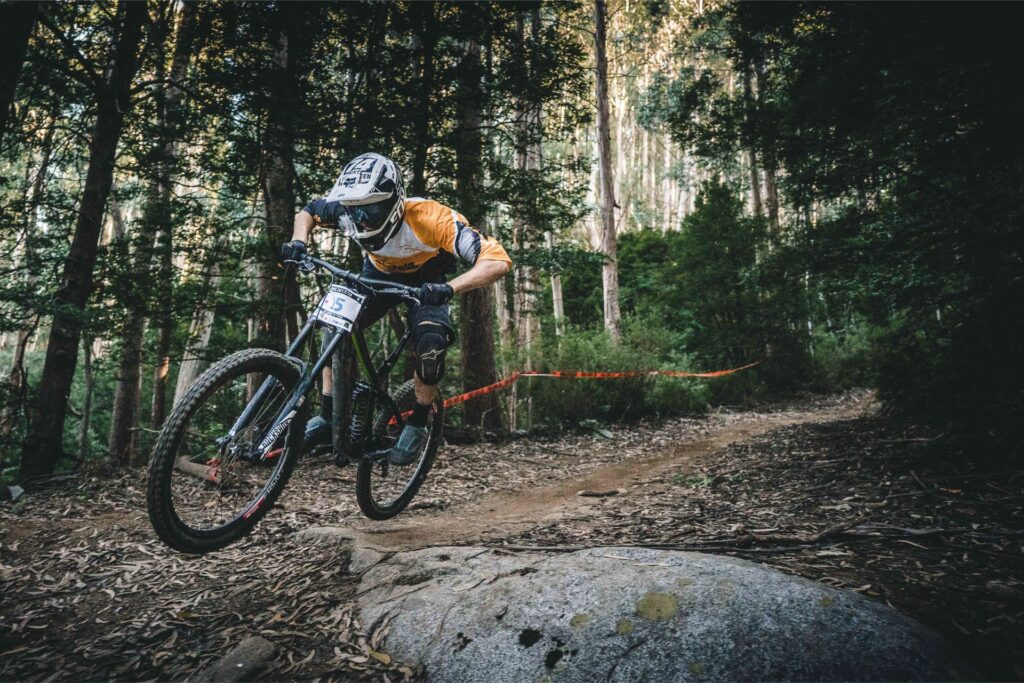
We can consider our glutes and hip flexors as our hip complex, and this is a very important group of muscles to keep balanced and strong. Sedentary professions and lifestyles can exacerbate hip issues and it’s very common for this dynamic to be imbalanced.
Glute bridges are an excellent exercise to perform regularly to counteract the shortened position our hip flexors are in when we cycle and are sitting down for extended periods of time.
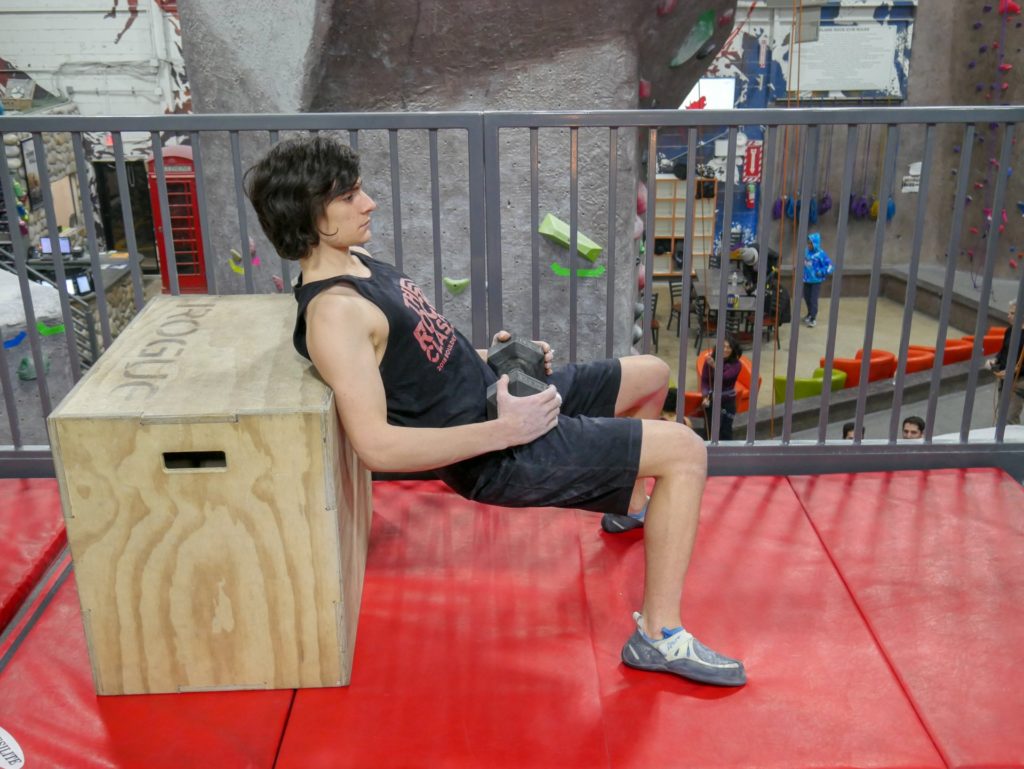
Glute bridge start 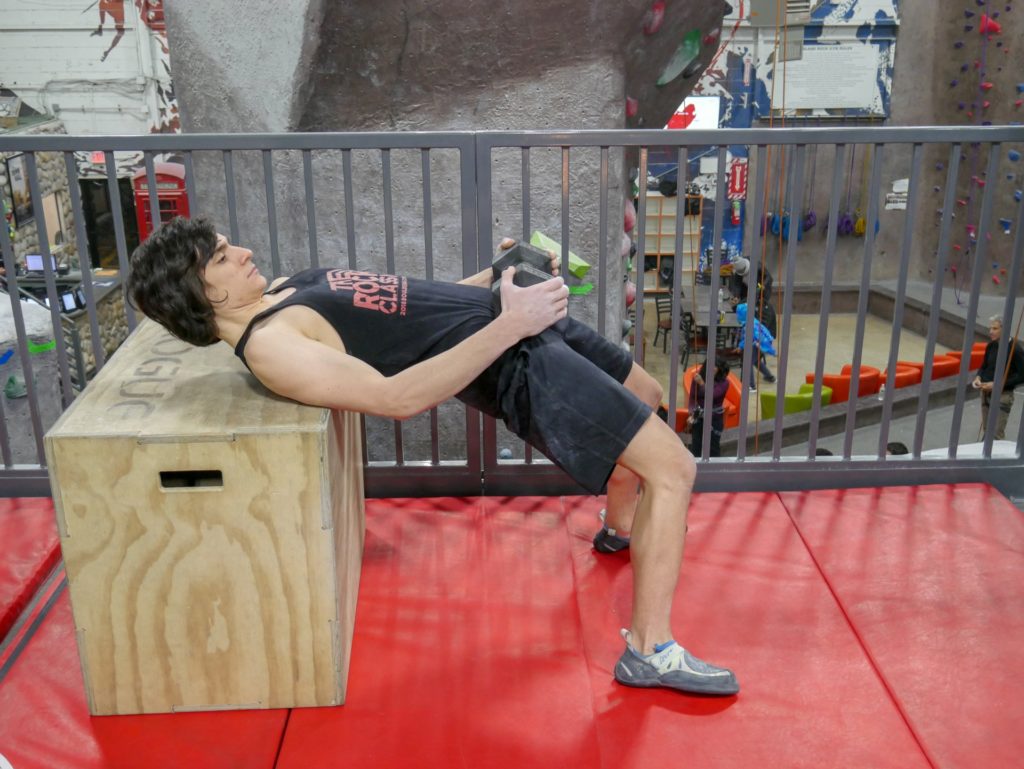
Glute bridge finish
Lower Back
When we sit at a desk or a bike we are constantly in a hunched over position. Over time our lower back muscles become weakened and dysfunctional and it’s very important to maintain a strong lower back and core to avoid LBP (lower back pain).
Hip hinge exercises such as Bent over Barbell rows, Deadlifts, and T-Bar rows are great for strengthening the back but are advanced lifts with consequences if performed incorrectly.
A good corrective exercise to start with is floor prone cobras:
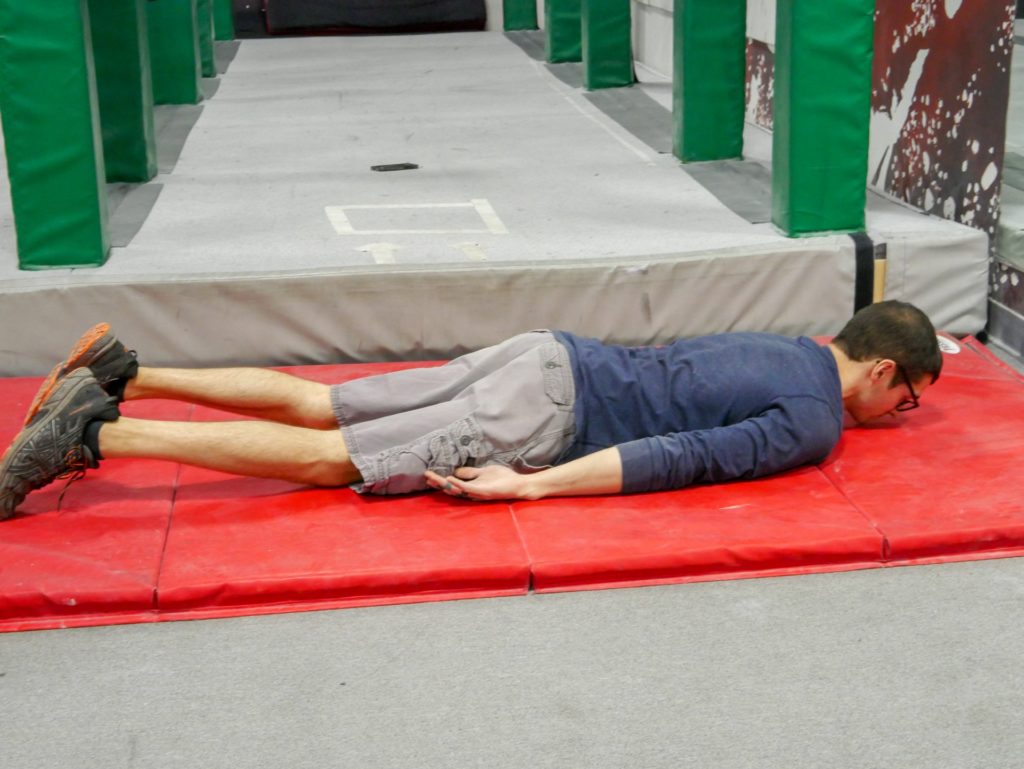
Start 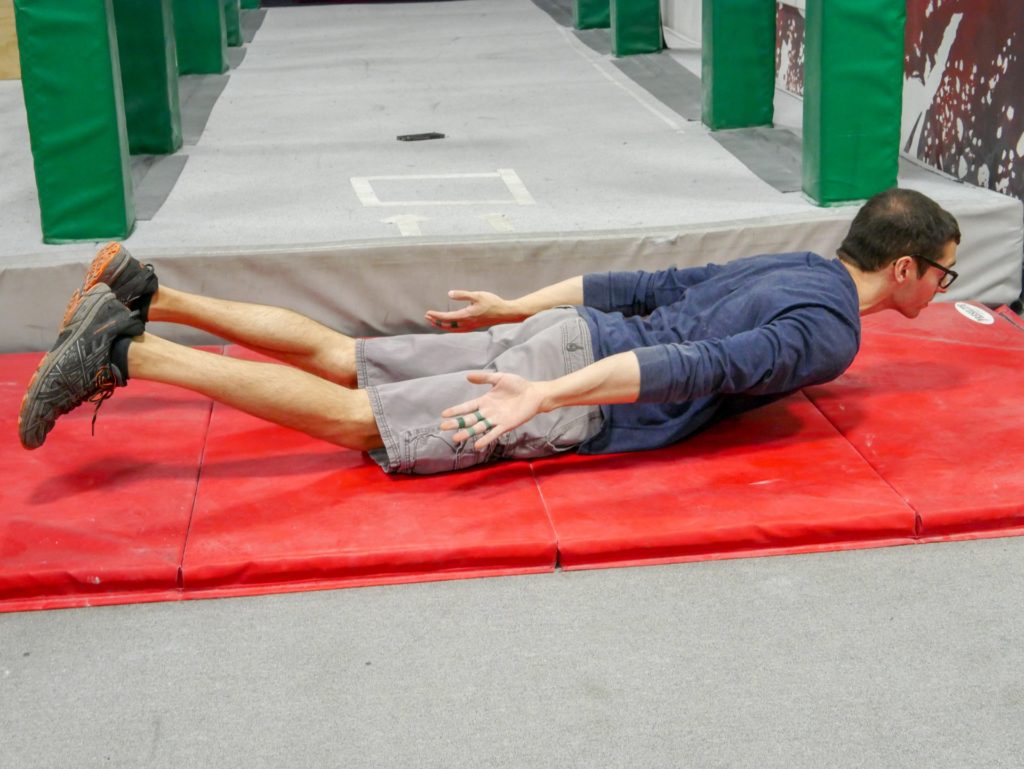
Finish
Another great exercise to begin with are Stability ball rows:
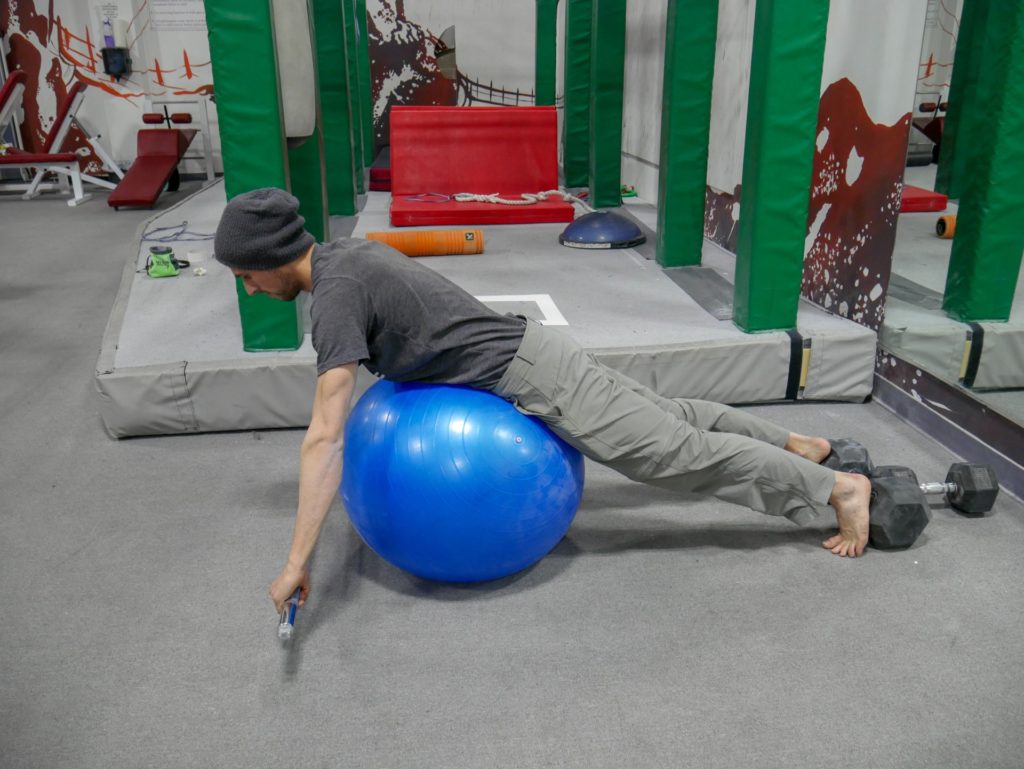
1 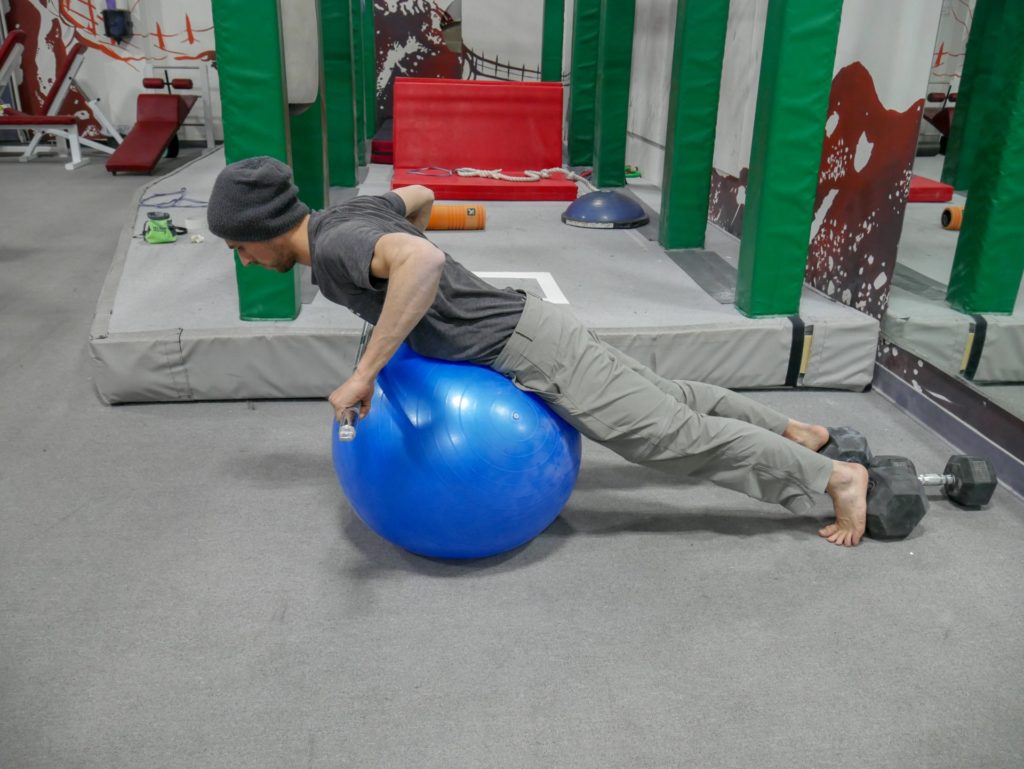
2 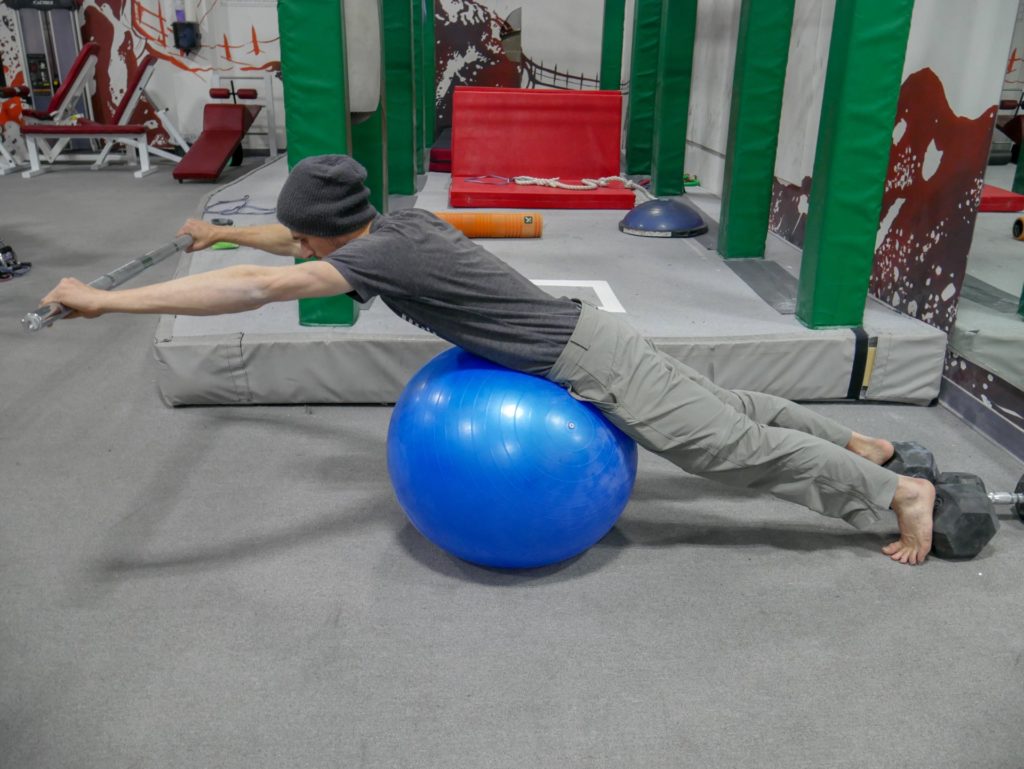
3 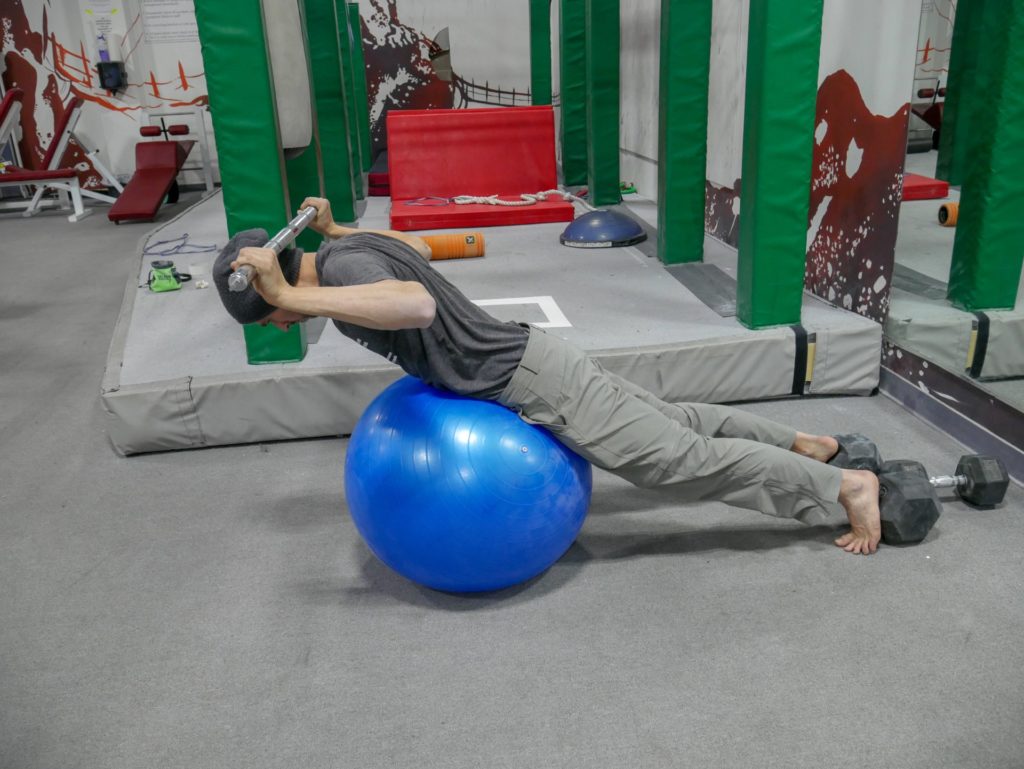
4
Performing an assessment
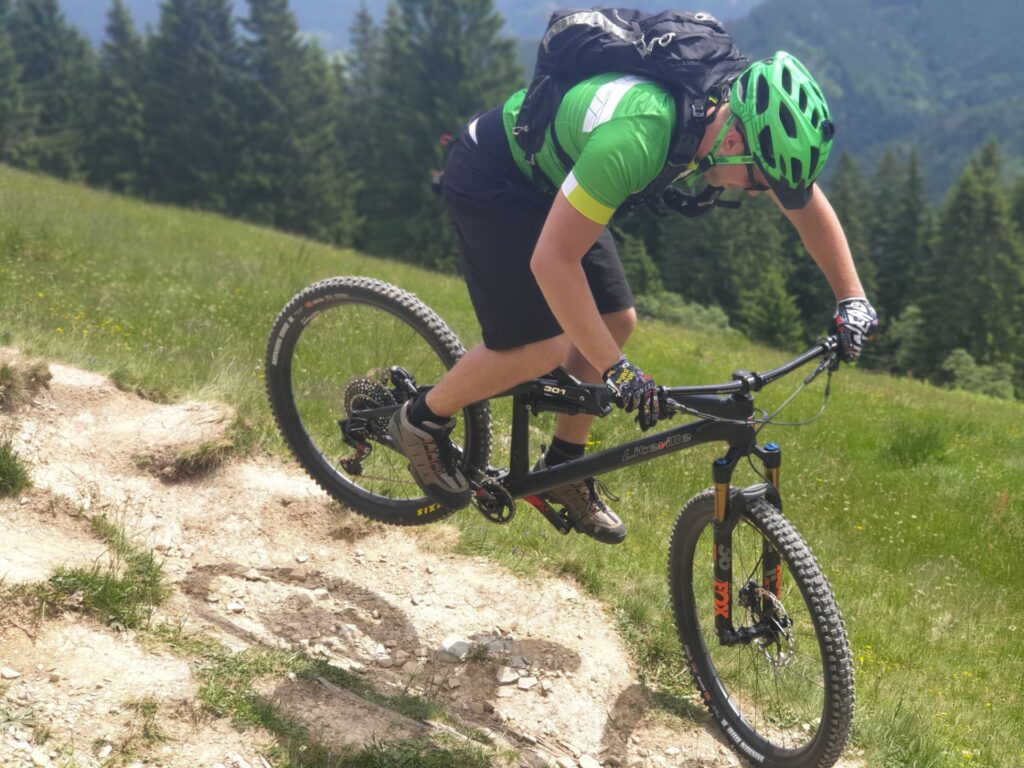
It’s very important to understand what muscles might already be imbalanced or have dysfunction. You might have compensations that have developed from previous biking injuries. We want to restore as close to normal joint function as possible for the best chance at avoiding injury and problems.
Performing an assessment is an easy way to monitor and understand whats going on in your body. An overhead squat assessment is a great tool for bikers to use. This will give you a baseline for your mobility and give you a goal to work towards.
Avoiding injury and imbalances aren’t always possible. If there’s real damage to a joint, soft tissue damage, or worn cartilage, surgery or injections might be needed. If an issue is ongoing or unbearable you should absolutely see your doctor.
Incorporating into a program

It’s important to use corrective exercises and training to complement our activity and goal, not take away from it. We want to avoid biking injuries, not cause them. Learning how to construct a program will help you incorporate the right amount of volume (reps, sets, frequency) of your exercises and maintain structure to your approach. Your issues should be improving, not worsening. Getting the correct amount of sleep and nutrition for recovery is essential.
A proper program will include the exercises you personally need for your muscle imbalances, existing conditions, and level of fitness.

